Today I am excited to introduce the first speaker for The 2013 Seminar, Dr. Anadoliy Bondarchuck. Dr. Bondachuck will be discussing the long term development of athletes in conjuction to his newest work coming out through Ultimate Athlete Concepts in the coming months. We are extremely excited to have a man with Dr. Bondarchuck’s resume and accomplishments on campus here in April. So without further ado, allow me to introduce Dr. Anatoliy Bondarchuck.
JD: If you could, please give our readers a little background information about you, what your niche in the world of athletics is, accomplishments, how you got there, education, any products you have available and/or notable publications.
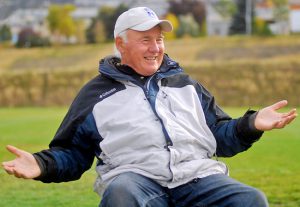
Throughout my carrier I have had many athletic achievements including: 1967- 2nd Place in the World, 1968- Member of the USSR National Team, 1969- Set 2 World Records, Became European Champion, and Set a World Record in Athens, 1970- Winner of the European Cup (number one in the world), 1971- 3rd place at European Championships (Helsinki), 1972- Olympic Champion (Munich) Set Olympic Record, and 1976- 3rd Place at the Montreal Olympics.
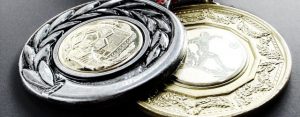
As far as education goes, in 1962 I graduated from the Kaminets-Podilskiy Pedagogical Institute with a focus in specific physical preparation, anatomy, biology, and human physiology. In 1970 I began my graduate studies at the Soviet National Scientific Research Institute of Physical Culture, which I finished in 1972. In March of 1972, I defended my Graduate Dissertation, and in May of 1988 my Doctoral Dissertation.
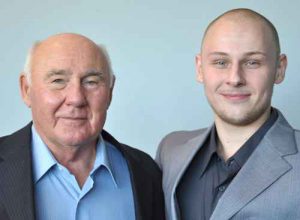
JD: Discuss with us the mistakes you see made by strength and conditioning coaches in the United States and around the world, and what you feel should be done differently/how to correct these issues.

This is one of the most egregious misconceptions in the theory and method of physical development. In the process of developing maximal strength, the athlete develops the slow twitch muscle fibers. Conversely, in the process of developing maximal speed, the athlete is developing the fast twitch muscle fibers. So we see that slow twitch muscle fiber cannot assist (useful transfer of training) the development of fast twitch muscle fibers. In real time it is critical to decrease the volume of training loads 50-70 percent, which solves the problem of developing maximal strength. When you increase training loads, you are working on maximal speed.
JD: What advice would you give a coach to improve knowledge in the lines of continuing education, meaning could you point our readers in a direction to find the scientific and practical information to improve the methods they use to improve performance?
AB: To improve the Qualifications of a coach it is critical to:
1) Read and analyze literature from a variety of sources (articles, books, monographs)
2) Attend a variety of training and scientific conferences and seminars. Experiment with your own athletes.
3) Examine critically the use of theories and methods of physical development, which have been proposed in the last 50-70 years.
4) Give credence only to those recommendations that are founded on documented experimentation on athletes, not thought up in “quiet” classrooms.
JD: You have a new product coming out in the near future through Ultimate Athlete Concepts. Could you please touch upon what your latest work will cover?
AB: In the book “ Long-Term Training in Sports”, the following items are examined:
1. General presentation of LTAD.
2. Biological specifics for growing boys – from seven years to 18-20.
3.Explanation of patterns of growth basics for the development of athletes. Using 10 new methods of developing strength.
4. Explains different was of splitting up volume and intensity of training loads over the course of weeks, months, bi-annual and yearly cycles of training.
5. 16 ways to help in construction of training periods.
6. Includes a sample construction of 20 programs for the development of max speed and strength, in as much as these exercises develop strength.
The premise of the book “A long-term system of athlete preparation in many aspects of sport” is that over the course of each sequential preparatory period, it is critical to use new, more effective ways of implement training complexes and loads. It is accepted that this is the only way to improve sporting results over the course of many years of competition.
Outlines the structure of given training complexes and intensities over the course of 20 preparatory periods. The effectiveness of the process of sport improvement largely depends on the regular transfer of training and the periodization of sport preparation. There is more written on these topics in the following books.
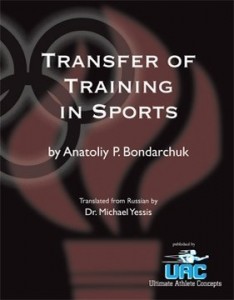
www.Ultimateathletecincepts.com
A.Bondarchuk, 2010. Transfer of training in Sports (2 volume).
www.Ultimateathleteconcepts.com
Bondarchuk A. Periodization of training in sports (volume 1, 2, 3).
Www.newtrainingconcepts.com
JD: Thank you for your time Dr. Bondarchuck. We are really excited to have you on campus in April and cannot wait to see what you have in store for our attendees.
We are hoping to provide the best possible content for strength coaches with each of our shows. If feel this could provide value for anyone else in the strength and conditioning field please feel free to share.
Enjoy the content? Then you should check out The Strength Coach Network!
You can find sensational content just like this in The Strength Coach Network. As a member of The Strength Coach Networks, you can access over 200 hours of the highest-level lecture content just like this one for 48 hours for only $1. Follow the link below to sign up and use the code CVASPS at check out to get a 48 hour trial for only $1. Check out The Strength Coach Network Here! https://strengthcoachnetwork.com/cvasps/
#StrengthCoach, #StrengthAndConditioningCoach, #Podcast, #LearningAtLunch, #TheSeminar, #SportsTraining, #PhysicalPreparation, #TheManual, #SportTraining, #SportPerformance, #HumanPerformance, #StrengthTraining, #SpeedTraining, #Training, #Coach, #Performance, #Sport, #HighPerformance, #VBT, #VelocityBasedTraining, #TriphasicTraining, #Plyometrics

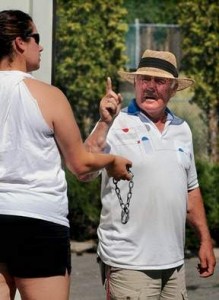

Pingback: Bondarchuk on Maximum Strength and Intensities « HMMR Media
Pingback: My Blog | Bondarchuk on Maximum Strength and Intensities